Szczecin metropolitan area
Aglomeracja szczecińska | |
|---|---|
Urban area | |
.jpg.webp) Skyline of Szczecin | |
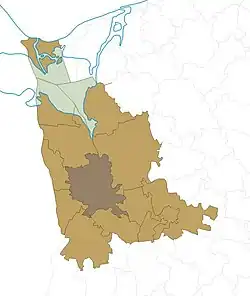 Map of the Szczecin agglomeration (range of the agglomeration according to Swianiewicz) | |
| Country | |
| Largest city | Szczecin |
| Area | |
| • Metro | 2,795 km2 (1,079 sq mi) |
| Population | |
| • Metro | 750,000 |
| • Metro density | 270/km2 (690/sq mi) |
| GDP | |
| • Metro | €12.101 billion (2020) |
| Time zone | UTC+1 (CET) |
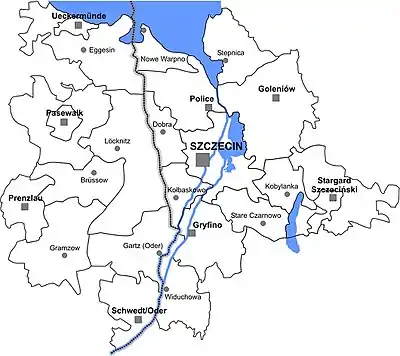
Szczecin agglomeration or Stettin agglomeration is the urban agglomeration of the city of Szczecin and surrounding towns[3] in the Polish-German border area.
The Larger Urban Zone defined by Eurostat includes 777,806 people living on 5249 km2 in the area (2012).[4] It includes the cities and towns of Stargard, Świnoujście, Police, Schwedt, Goleniów, Gryfino, Prenzlau, Pasewalk, Ueckermünde, Eggesin, Gartz, Stepnica, Penkun, Brüssow and Nowe Warpno. There are a group of villages situated between Szczecin and towns of the agglomeration. The villages of Mierzyn, Löcknitz, Przecław, Dobra, Trzebież and Kobylanka are parts of the urban system.
Since 2012, the agglomeration is actively developed as the core of a wider European metropolitan area, likely including the German districts of Mecklenburgische Seenplatte, Vorpommern-Greifswald, Uckermark and the West Pomeranian districts neighbouring Szczecin in Poland.[5]
Subcenters
| Wały Chrobrego (Hakenterrasse) Szczecin (Stettin) |
Port of Szczecin Szczecin |
Port of Police Police |
Szczecin International Airport Goleniów |
|---|---|---|---|
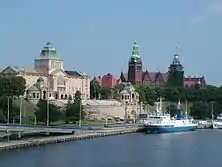 |  |  | 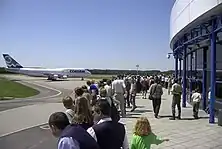 |
| The Old Town of Stargard |
The former Red City Hall of Szczecin Szczecin |
City Gate in Pasewalk Pasewalk, Germany |
Seaside resort and port on Usedom Island Świnoujście (Swinemünde) |
|---|---|---|---|
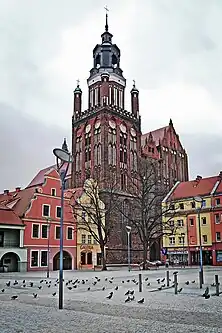 | 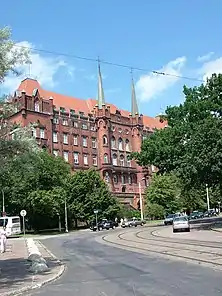 | 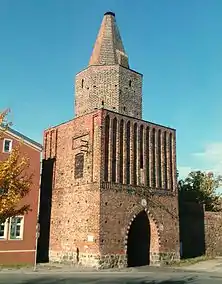 | 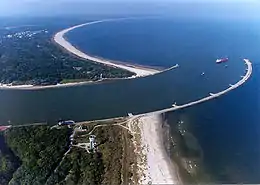 |
See also
References
- ↑ "Gross domestic product (GDP) at current market prices by metropolitan regions". ec.europa.eu.
- ↑ "Gross domestic product (GDP) at current market prices by NUTS 3 regions". ec.europa.eu.
- ↑ "MDRL.ro - stiri, vedete, economie, cultura, sanatate, politica" (PDF).
- ↑ Urban Audit database Archived 2011-04-06 at the Wayback Machine
- ↑ Cooperation without borders, info PDF (DE/PL)